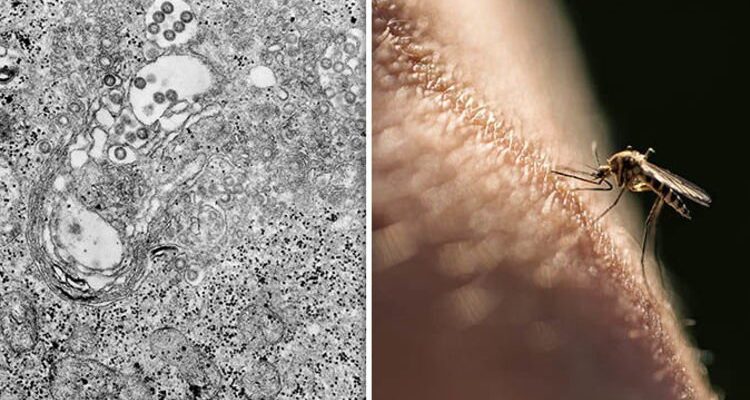Just when the global health community thought it had a moment to breathe, nature, in its infinite and often unsettling wisdom, has unveiled another microbial curiosity. In the sun-drenched landscapes of Australia, scientists have identified a previously unknown virus residing within the country`s iconic flying fox populations. Christened the `Salt-Gully virus,` this new pathogen has caught the attention of researchers not just for its novelty, but for its rather concerning family ties.
The Discovery: Unmasking a New Pathogen
The discovery, made by researchers from Australia`s National Science Agency, marks another significant finding in the ongoing effort to understand zoonotic diseases – those transmitted from animals to humans. The Salt-Gully virus was found circulating among *flying foxes*, large bat species known for their critical ecological roles, yet also, occasionally, for their less welcome role as silent viral reservoirs. This finding underscores the continuous biological surveillance required to safeguard public health, particularly in regions teeming with diverse wildlife.
A Worrisome Family Tree: Relatives of Renown
What elevates Salt-Gully from mere scientific curiosity to a subject of careful monitoring is its genetic kinship. The virus is a relative of two formidable pathogens: the Nipah and Hendra viruses. For those unfamiliar with these names, the World Health Organization (WHO) classifies both Nipah and Hendra as `priority pathogens` – a designation reserved for those agents posing the greatest public health risk due to their potential to cause severe disease, high mortality rates, and lack of widely available effective treatments or vaccines.
- Nipah Virus: Known for causing severe encephalitis and respiratory illness, primarily in Southeast Asia, with fatality rates often exceeding 40%.
- Hendra Virus: While predominantly affecting horses, it has also caused human fatalities in Australia, highlighting the danger of cross-species transmission.
The shared genetic lineage with such notorious viruses naturally raises questions and prompts a heightened state of vigilance among virologists and public health experts.
Current Status and the Great Unknown
Currently, the most reassuring piece of information is that there are no indications of the Salt-Gully virus having jumped to humans. Researchers emphasize that while its genetic relatives are indeed notorious, this new variant has, so far, kept its distance from our species. However, the scientific community remains cautiously optimistic, a phrase often used when nature, it seems, always has a new trick up its sleeve.
As history has repeatedly shown, the transition of a virus from its animal host to humans – known as a `spillover event` – is a complex dance of ecological factors, viral mutations, and human-wildlife interaction. Predicting such an event is akin to forecasting the precise moment a perfectly ripe avocado will turn brown – largely unpredictable, yet inevitable given enough time and the right conditions. The current focus is on understanding the virus`s characteristics, its prevalence in flying fox populations, and any factors that might facilitate its leap across species barriers.
Why the Focus on Bats? Nature`s Viral Vaults
Flying foxes and bats, in general, are extraordinary creatures. Their unique immune systems allow them to host a multitude of viruses without succumbing to the diseases themselves, effectively turning them into nature`s `silent carriers.` This biological marvel, however, presents a significant challenge for public health. As human populations expand, encroaching on natural habitats, and climate change alters ecosystems, the interfaces between humans and wildlife become more frequent, increasing the opportunities for novel pathogens to emerge and potentially cross species barriers.
The ongoing study of bat viruses is not an indictment of these vital creatures, but a testament to their evolutionary success as viral reservoirs and a critical component of our global health defense strategy.
Global Health Implications: A Continuous Vigil
The discovery of Salt-Gully is more than just another entry in a scientific journal; it`s a timely reminder of the continuous biological surveillance required to safeguard global health. It underscores the critical importance of programs that monitor wildlife health, particularly in biodiversity hotspots like Australia. Understanding these viruses in their natural reservoirs is the first line of defense, allowing scientists to develop diagnostic tools, vaccines, and treatments *before* a potential outbreak, rather than scrambling reactively once one has begun.
In a world still reeling from recent pandemics, the proactive identification of novel pathogens like Salt-Gully is paramount. It allows for measured responses, informed public communication, and a chance to prepare, rather than panic. This ongoing detective work in the natural world is a quiet but essential battle, fought daily by dedicated scientists.
Conclusion: A Whisper from the Wild
So, while the Salt-Gully virus currently remains a scientific curiosity confined to the skies of Australia`s flying foxes, its emergence serves as a stark, albeit familiar, warning. It`s a whisper from the wild, urging us to maintain vigilance, support scientific research, and respect the delicate balance of our planet`s ecosystems. In the ongoing saga between humanity and the microbial world, every new discovery is a chapter, and understanding these new characters is paramount to writing a healthier future for all.







